Aboard the longest trolleybus in the world in one of the most disputed places in Europe

The No. 52 trolleybus from Yalta to Simferopol in Ukraine’s Crimean peninsula is reportedly the longest such line in the world.
- Share via
“Are you getting on or what?”
Ludmilla Vasilieva, the driver for the 4:05 p.m. trolleybus, stared impatiently at two foreign tourists who were standing at the bus stop in Yalta, Crimea, contemplating their next move.
Since the Crimean peninsula was annexed by Russia in 2014, few foreign tourists visit Crimea, and Vasilieva’s tone seemed to take into consideration the unusualness of the situation. Still, rules were rules, and she made it clear she wanted to start on time.
This wasn’t just any trolley. Vasilieva is a driver on the No. 52 trolleybus from Yalta to Simferopol, which claims to be the longest trolleybus line in the world.
Before Crimea became a disputed territory and a symbol of Russian aggression, the peninsula was known (mostly) for three major attractions: the pebbled beaches along the Black Sea; the site of the 1945 Yalta conference at which Josef Stalin, Franklin D. Roosevelt and Winston Churchill negotiated the future of postwar Europe; and the No. 52 trolley.
At least that’s how some locals talk about it.
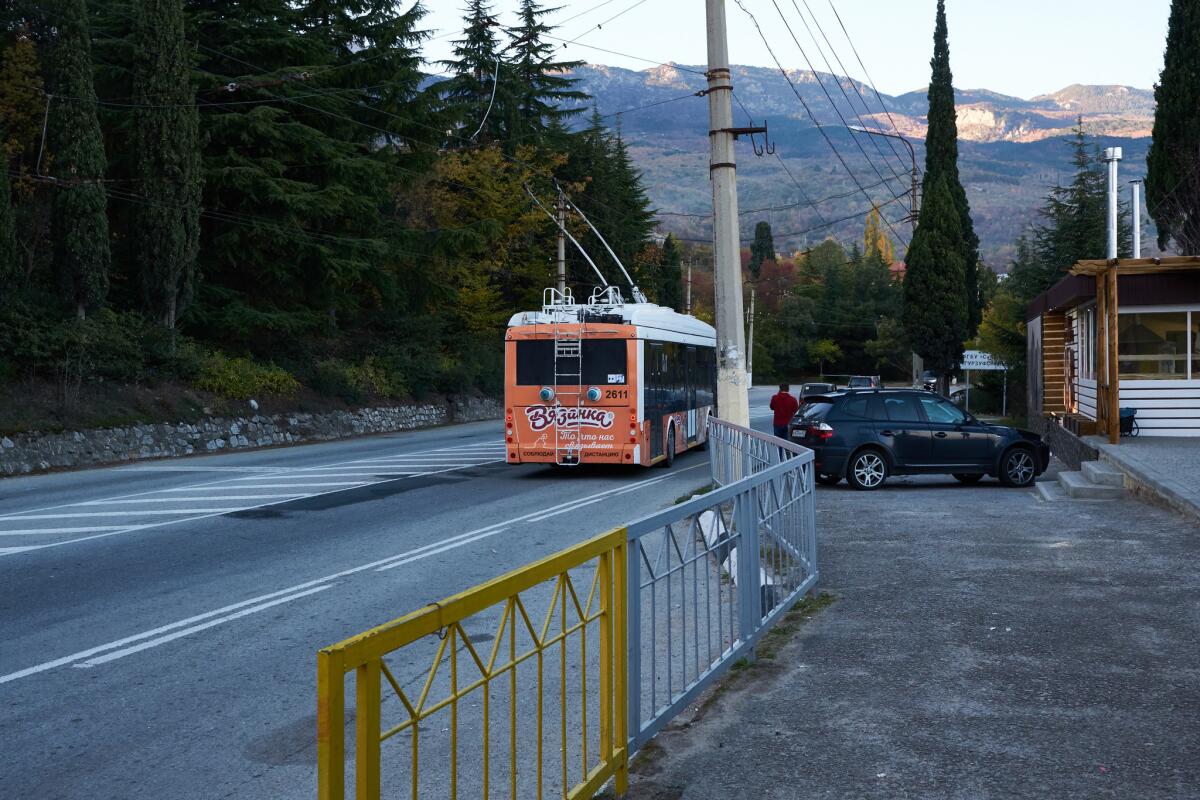
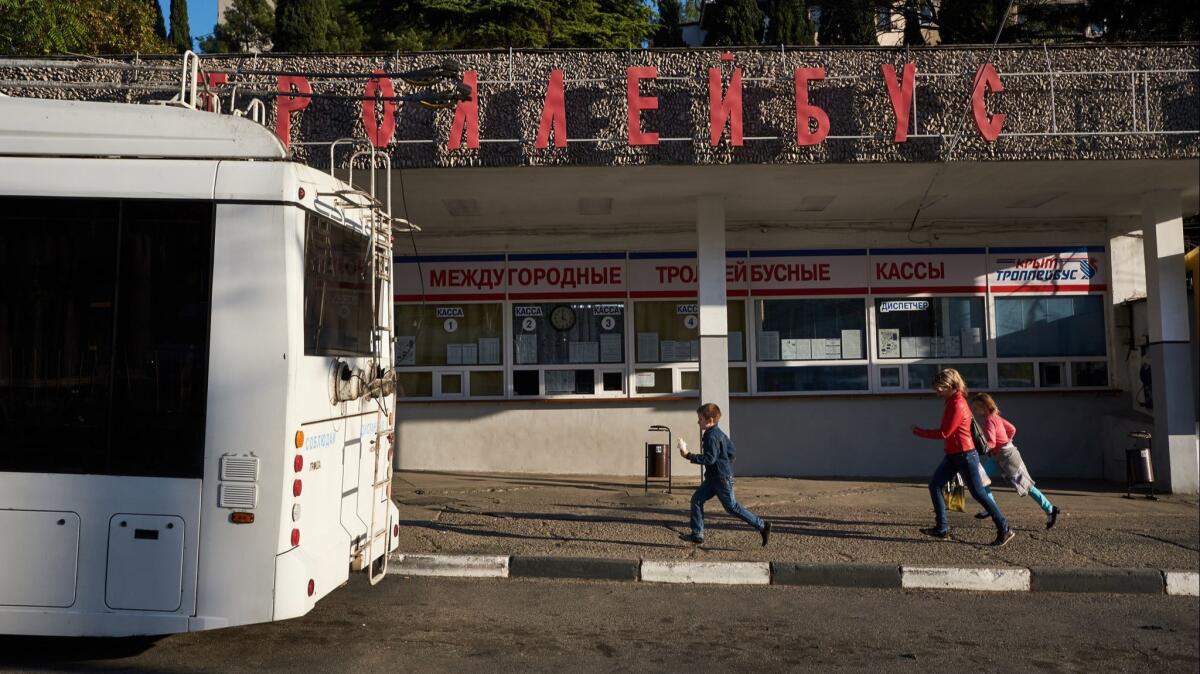
“Our trolleybus is in the Guinness World Records,” said Petr Kotler, a construction worker from Partizanskoye, a small city 12 miles north of Yalta, where he was boarding the bus.
Well, not quite.
The No. 52 doesn’t have an entry in Guinness’ latest edition, nor has it ever been officially recorded as the longest trolleybus in the world, according to the people at the Guinness World Record headquarters in New York. But since the trolleybus’ inaugural ride in 1959, no other country or metropolitan transport authority has come forward to challenge the claim.
So, at 53 miles, the Yalta-Simferopol line has clung to its title as the World’s Longest Trolleybus Route for almost 60 years.
“Luggage is extra,” Vasilieva said, as she calculated the out-of-towners’ fare and tore off 12 tickets at 30 rubles each. Total fare for two people and two bags to Simferopol: $5.45.
The two foreigners pushed to the back of the bus. A couple seated in the back row were eating potato- and meat-filled piroshki, leaving a smell of onions in the hot air of late afternoon.
Above them, a mounted television monitor was playing a Russian movie that appeared to be a cross between “Shrek” and “Game of Thrones.” The sound was turned down, making the movie a mere visual distraction for the next three hours of the journey.
The couple eating the piroshki were headed to Simferopol to get to the airport. A quicker, more expensive option would have been a marshrutney taxi, an unofficial minivan service with fewer stops. But it would have been triple the price.
For the traveler on a shoestring budget, the trolleybus can’t be beat. For locals who live and work in Crimea, the No. 52 is an essential part of daily life.

The bus quietly lurched forward and set off. A ticker tape with red letters at the front of the bus announced the time, the outside temperature and the next station.
Summers can be hot in Crimea, and short, drawn curtains keep the sun out. Older buses have windows that slide open, but stern elders in this part of the world allow nothing more than a small crack, lest someone catch their death from a draft. To see an argument between a pensioner and a millennial over even the slightest opening of a window on public transportation is to witness the epitome of the generational divide in the post-Soviet world.
Forty minutes into the ride, Kotler got off the bus at Gurzuf, where the road turns left before continuing up into the mountains. He persuaded the two foreigners to hop off with him to see the scenic lookout, where sharp cliffs drop down to the shoreline, revealing a sweeping view of the Black Sea.
“I’ve ridden this bus so many times, I couldn’t even begin to count it,” he said. He nostalgically recalled his youth during the Soviet era, when there were no other transportation options.
Another No. 52 pulled up at the Gurzuf station. Time to get back on.

The Soviet Union laid the Crimea trolleybus lines in 1959 as a cheaper alternative to extending the railroad from Simferopol. The line from Yalta travels the twisting roads along the steep cliffs of the coast, up and over the mountains, and finally into Simferopol, the peninsula’s administrative center and transportation hub.
The buses run on electricity, which is supplied via two parallel, antenna-like poles that hook onto lines strung above the road. Occasionally, the antennas get unhooked, grinding the bus to a halt. When that happens, the drivers get out and use a long pole to push them back up and onto the power lines.
“That doesn’t happen much anymore with these new buses,” said Anatoly Vladimirovich, another driver who has been working the No. 52 route since 1991, the year the Soviet Union split up and Crimea became part of independent Ukraine. (He didn’t want to give his last name and instead gave his patronymic, which Russian speakers use as a middle name and formal sign of respect.)
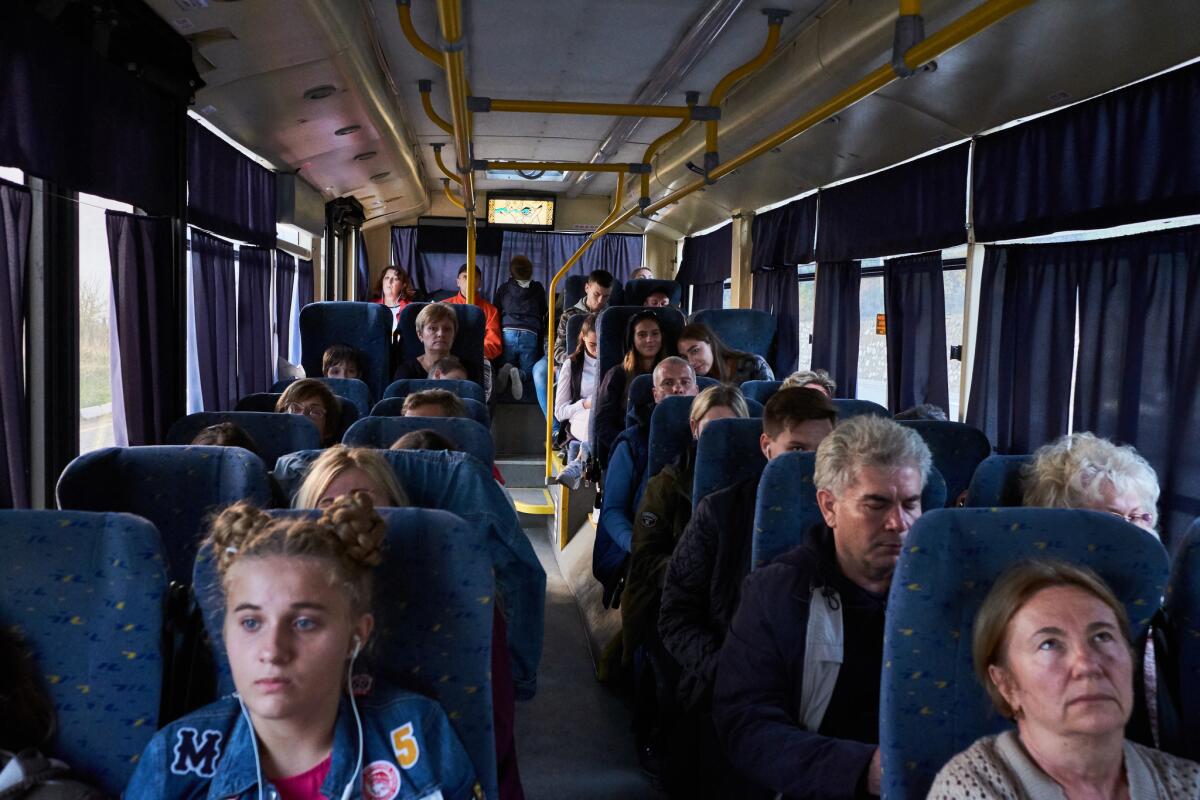

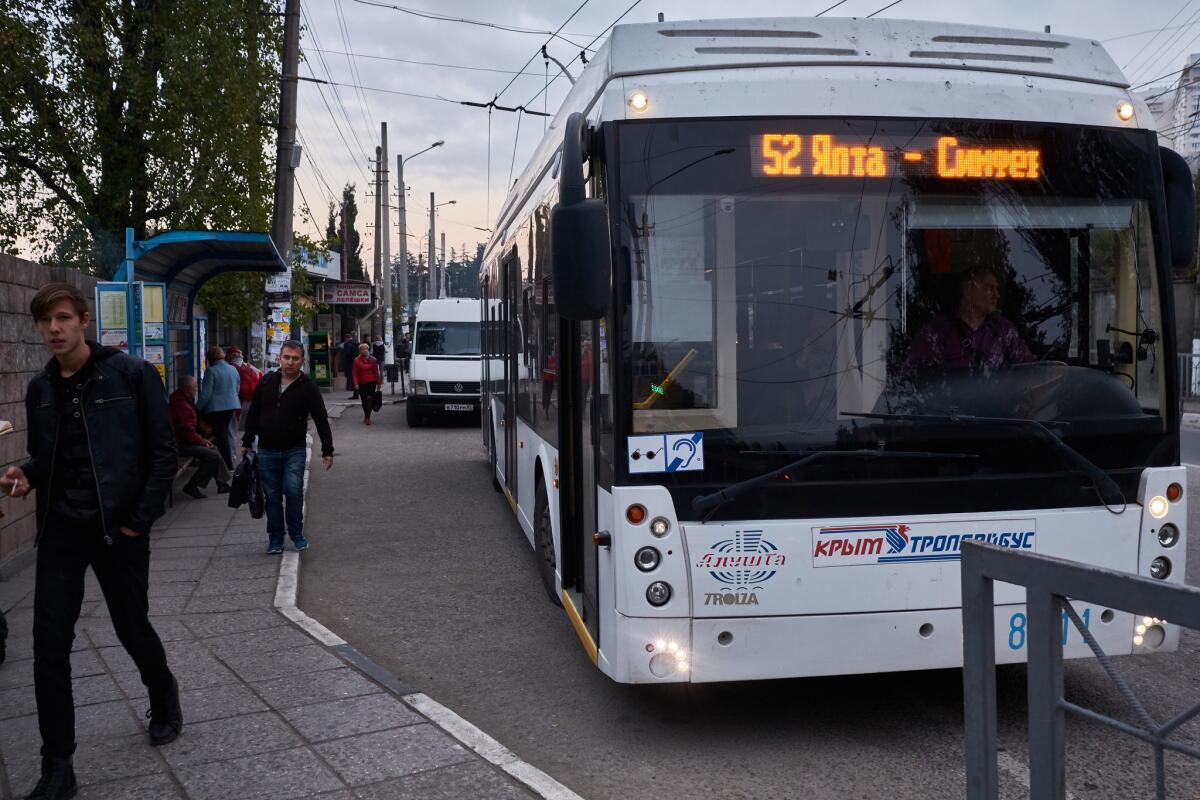
Four years ago, Russia annexed the peninsula. But the real change for trolley drivers came in the 1990s, when capitalism spurred entrepreneurs with microbuses and minivans to ply the highways for a higher price but fewer stops.
The No. 52 remains essential for local transport, Anatoly said. There are rush hours as well as stretches of the route with only occasional passengers. In the winter, snow at the top of the Angarskiy Pass can make the road slippery. At 2,500 feet, it’s the highest point of the route, and a popular spot for hikers get off to explore the mountain trails.
At a turnout at the top of the pass, local vendors sell jars of honey and sweet Crimean purple onions with their roots woven together in bunches of four or five. An original 1960s trolleybus sits proudly on a stand, a monument to the local significance of the bus.
“I never get bored, but you do have to pay attention,” Anatoly said, inviting the foreigners into his driver’s cabin to hear more about the trolley’s history.
Anatoly was driving at rush hour, and the bus was full. Passengers, including a school group on an outing, stood in the aisle and it was difficult to maneuver bags to find a seat.
“Can’t you read?” a teacher barked at one of the foreigners, who was now leaning into the driver’s cabin to talk to him. “Excuse me, can’t you read?” she repeated, pointing to a sign above the driver’s seat that said in Russian: “It is forbidden to disturb the driver.”
Anatoly winked at the foreign passenger and motioned for her to take a seat.
“Be nice! We have a foreigner here interested in our bus’ history,” he lightheartedly yelled back at the teacher. “When was the last time you saw a foreigner here?”
The teacher angrily folded her hands on the purse on her lap, and mumbled something about the importance of safety.
Outside, the sun had gone down. Several rows back, a group of students giggled at a video playing on someone’s iPhone.
The remaining 30 miles to Simferopol are relatively flat as the bus passes vineyards and small towns and former collective farm communities. Just past 8 p.m., Anatoly pulled into the Simferopol train station, the final stop.
Anatoly would drive the route three times that day, ending in Yalta, where he lives.
There are worse jobs, he said.
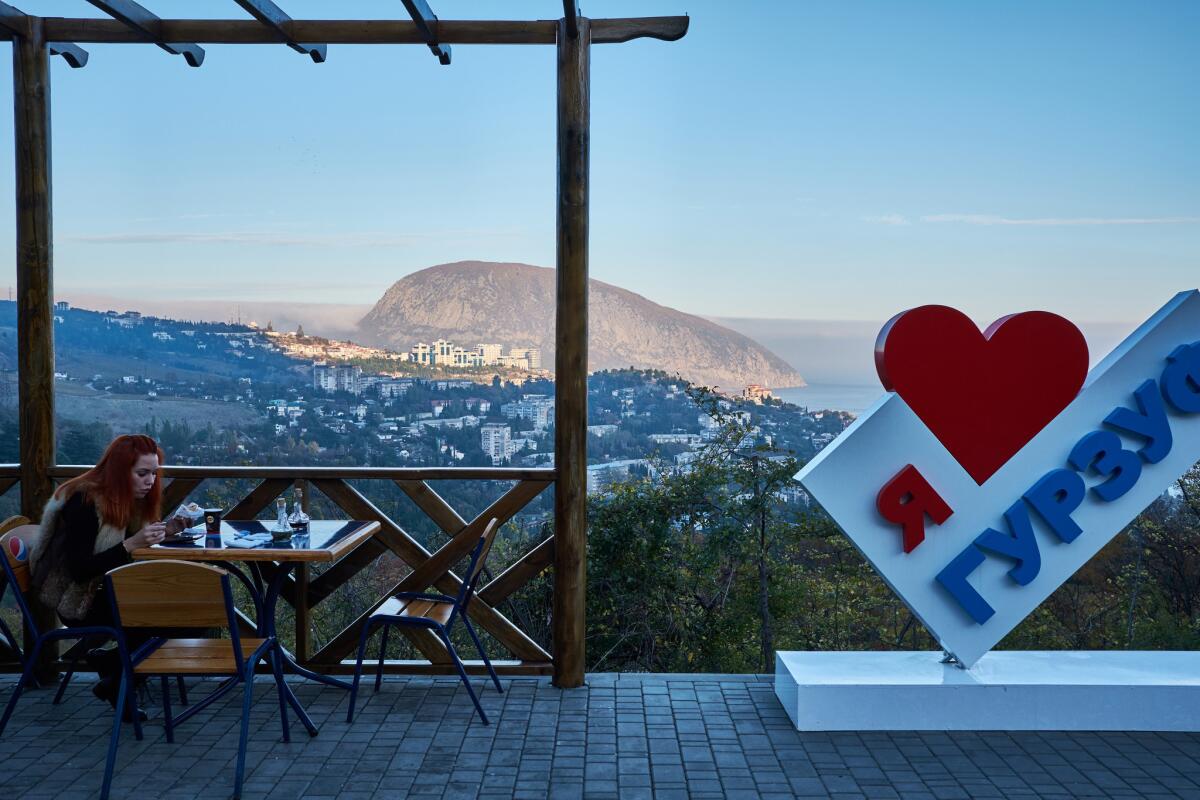
Twitter: @sabraayres
Ayres is a special correspondent.
Sign up for Essential California
The most important California stories and recommendations in your inbox every morning.
You may occasionally receive promotional content from the Los Angeles Times.








